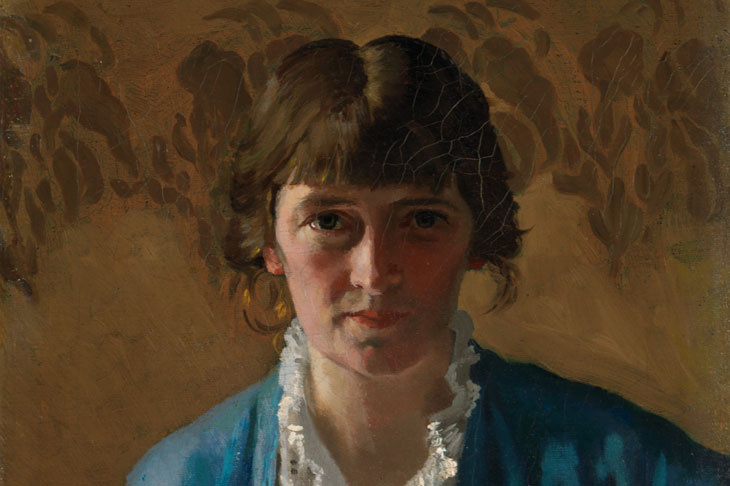The refurbished National Gallery of Ireland has been open for over a month. The renovated wings are abuzz. Old favourites, many now restored, are looking fresh and the (excellent) ‘Vermeer and the Masters of Genre Painting’ exhibition is packing in the punters. Having already been in Paris, it will soon head on to Washington D.C. It is the quintessential international blockbuster show, and presumably it would have been impossible to host without the newly available rooms. So the gallery is back playing with the big kids.
I hope though the curators will not forget the lessons learned during their six years in more restricted quarters. During this time, they put together several unusual and imaginative shows, which the lack of space seemed to enable as much as impede. Smaller is sometimes better. Indeed the assiduous use of archival material – photographs, letters, sketchbooks – can illuminate a handful of artworks to great effect. The local and the little known can be just as compelling as the globe’s greatest hits.
A few weeks before the refurbished wings were unveiled, an exhibition embodying such virtues opened. Amid the hubbub, it is still there, tucked away in the print gallery. The show focuses on Margaret Clarke, an Irish artist whose close association with others – she was William Orpen’s favourite student and the wife of the renowned stained glass artist Harry Clarke – has not always aided her own reputation.
The Wife / The Haircut (c. 1926–27), Margaret Clarke. The Irish News Collection. © Artist’s Estate. Photo © Irish News Collection, Belfast. Photographer: Bryan Rutledge
Born in 1884 in Newry to humble circumstances (her father was a linen hackler), she worked her way up from night classes at the local technical college to winning a scholarship in 1907 to study at the Dublin Metropolitan School of Art. She arrived at a good time. William Orpen’s teaching was having an inspiring effect on a generation of students. Winning further scholarships as well as national medals, she went on to become Orpen’s teaching assistant, before she succeeded him in 1914 in overseeing the school’s life-drawing class. That year she also married Harry, another of the school’s star students. The exhibition does much to capture this period of promise. Contemporary letters and photographs, Margaret’s own appearance as a figure in Orpen’s playful 1910 drawing Life Class on the Beach, and the early works she produced while on yearly group trips to the Aran Islands evoke a time of productive joy before world war and rebellion at home intervened.
A Girl’s Head (1909), Margaret Clarke. © Artist’s Estate. Photo © National Gallery of Ireland
The evidence of all this training is clear to see in Clarke’s skilful draughtsmanship. A 1909 Girl’s Head, possibly the recipient of one of those medals, is already highly accomplished in the standard academic style. Something more delicate and searching emerges, however, in a series of sketches from the 1920s of Julia O’Brien, a recurrent model who also worked as a domestic servant for the Clarkes. Juliana captures her partly turned away, her eyes looking off to one side, deep in her own thoughts while seemingly listing something to herself on her fingers, a study in domestic introspection and bodily angularity.
Robin Redbreast (c. 1915), Margaret Clarke. © The Estate of Margaret Clarke. Collection Ulster Museum
Throughout her career, Clarke enjoyed commercial success as a portrait painter, receiving several official commissions. But the best of her work in this genre, often done when not working to order, seems again to search out a certain kind of awkwardness. The remarkable early portrait Robin Redbreast (c. 1915) depicts her younger sister Minnie staring out intensely at the viewer, thumbs tucked into the pockets of her scarlet waistcoat. A sense of the vitality of this defiant pose is tempered, though, by the flat, bright blue-green wallpaper closing up the space behind. Reflected light in the sitter’s eyes is echoed in the glimmering of her jewellery. The decorative and the theatrical are here in some kind of uneasy tension with any intimacy with the subject’s character.
Bathtime at the Crèche (c. 1925), Margaret Clarke. National Gallery of Ireland. © Artist’s Estate. Photo © National Gallery of Ireland
A tendency to move towards the symbolic and allegorical is given fuller rein in Clarke’s subject paintings. The strongest of these, Bathtime at the Crèche (c. 1925) and The Wife/The Haircut (c. 1926–27), both feature O’Brien among their models and again seem subtly to offer a kind of staged reality, evoking the figures’ isolation. Less visually arresting and compositionally assured are the more overtly literary and religious works Clarke produced, such as Miserere (1926) or Strindbergian (c. 1927).
Strindbergian (1927), Margaret Clarke. © The Estate of Margaret Clarke. Collection Ulster Museum
Nevertheless, one was grateful to have had the chance to see them at all. Indeed this cannot have been an easy exhibition to put together, not least because so many of the pieces are on loan from private collections. The curator Niamh MacNally has done much to bring the nature of Clarke’s under-regarded achievements to light. Let’s hope the gallery, amid its rejuvenation, continues to do such shows so well.
‘Margaret Clarke: An Independent Spirit’ is at the National Gallery of Ireland, Dublin, until 20 August 2017. It will then transfer to the F.E. McWilliam Gallery & Studio in Banbridge from 15 September–18 November 2017.
Self-portrait (1914), Margaret Clarke. © Artist’s Estate. Photo © National Gallery of Ireland. Photographer: Roy Hewson
